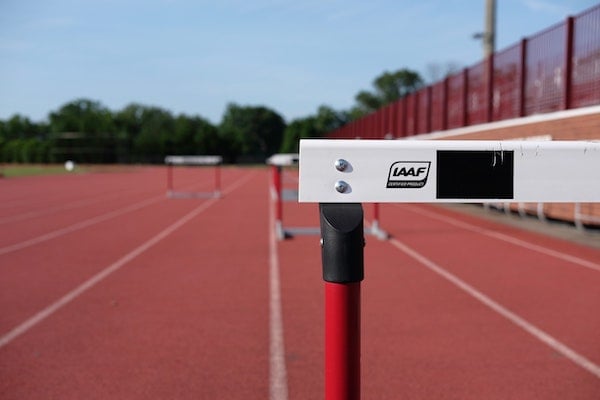Published on
Identifying Barriers to Innovation

Higher Education is at the intersection of complex challenges and tremendous opportunity. While chaotic and harsh, it is also a perfect opportunity to re-evaluate, redesign, and innovate.
Innovation is the execution of new ideas to meet challenges, improve processes, procedures, and therefore, outcomes. Innovation can arise for various reasons: problem solving or a shift in thinking; planned or unplanned. It can be sustaining, groundbreaking or disruptive, as defined by Greg Satell in a Harvard Business Review article. The term innovation is used in education most often by lawmakers, analysts, and education leaders alike, yet higher education faces many barriers to innovation. But it can also present opportunities! Below, I present these barriers ranging from institutional to systemic:
Culture of innovation
The biggest barrier to innovation is the “but we have always done it this way” mindset. Change is difficult but essential. In the past decade, higher education has come to include MOOCs, increased distance learning, listened to student demands for flexible learning, and brought corporations into higher education. We can no longer do it the way we have always done it. Higher education institutions have to innovate, and COVID-19 has further pushed out the status quo argument. In a Wall Street Journal article on November 12th, 2020, Douglas Belkin writes: “Enrollment in short-term credential classes during the pandemic increased by 70% to nearly 8 million over the same period last year, according to Jonathan Finkelstein, chief executive of Credly, a digital credentialing network. That increase came as freshman college enrollment dropped by 16%.”
In a series of studies that we conducted in Texas, we found that the biggest barrier to any new ideas is obtaining buy-in—both at the leadership level and at faculty levels. Dr. Mary Hendrix, the former executive vice president at Texas A&M University-Commerce advises to pick “your bell cows first” (of course, in Texas that’s what we do). These champions will lead the way for others. There are many institutions around the country spearheading innovative models and have imbibed a culture of innovation: Paul Quinn College, Arizona State University, University of British Columbia, Alamo Colleges District, Pierce College. Institutions of higher education can benefit from networking with these and other such institutions near them.
The Credit Hour and The Semester System
The credit hour or the Carnegie hour—higher ed’s wicked problem—uses time as the basis to measure student progress. The credit hour has been around since the late 19th century. All our systems are inextricably linked to the credit hour: financial aid, accounting, human resources, and more. Amy Laitinen of the New America Foundation laments that the Carnegie Foundation was explicit that measuring student learning was not the credit hour’s intent, yet, it has been so. Institutions, fearful of reprimand by the regulatory authorities are holding dear to the credit hour. It is the same story with the full-term semester system. It is now past the time to decouple from the credit hour, the full-term semester, and all the constraints therein. Instead of the credit hour, competencies need to become the gold standard for measuring student progress. Institutions such as Rasmussen University and South Texas College have, in certain programs, adopted the Comprehensive Learner Transcript, which instead of focusing on credits earned focuses on competencies mastered. This transcript provides a more comprehensive picture of student learning not just to the student but also to the institution and the employer. Other institutions such as Texas A&M University-Commerce and University of Mary Hardin-Baylor have changed their systems to fit in competencies within the constraints of the credit hour while offering flex subscription terms.
Stepping out of the silos
Institutions of higher education have traditionally been loosely coupled program silos. Institutions must step out and form partnerships for better student outcomes, decreased costs, and leveraging changes and ideas implemented and tested by others. Dominican University of California did exactly that. They formed an accredited partnership with Make School, creating what President Mary Marcy described as a “partnership unlike any other.” Leveraging what Make School does best—coding—while offering a liberal arts curriculum. Corporate America has realized the need for such partnerships and has stepped in with the Google IT certification, the Facebook Marketing certification, the Amazon AWS curriculum and many more.
Funding
Funding, at federal, state, and institutional levels, remains a barrier to innovation. As education costs increase and state budgets shrink, there are deep cuts. Institutions have struggled to divert funds to innovative initiatives. In Texas studies, we found that all institutions that started new, innovative competency-based programs did so with initial grant funding and learned along the way to scale these programs without external grant funding. Further, COVID-19 has placed an undue burden on institutions in the form of unplanned expenses. While the Higher Education Emergency Relief Fund (HEERF) provided relief to students, many institutions struggled; some shut down while others made deep cuts.
Corporate partnerships can help bring in new ideas with shared costs, as can organizations such as Lumina Foundation and National Science Foundation through grant funding. In Texas, the Texas Higher Education Coordinating Board serves as a conduit for funders such as College for All Texans foundations, which has given grants for flexible, competency-based affordable baccalaureate degrees.
Accreditation and regulations
Accreditation is the ultimate seal of approval for an institution of higher education. Unfortunately, in the absence of clear alternatives, accreditors have clung to the credit hour and the semester term. Accreditation reviews include these traditional structures and systems. The same goes for federal and state regulations. Accreditors still review only traditional education providers and not non-traditional education partnerships such as the ones between corporate and higher ed. Yet, the examples of Dominican University of California, show that there are precedents. Other institutions have devised ways to include non-traditional partnerships by creating a permeable membrane between continuing education programs and for-credit programs. Change is indeed possible!
Cost of education
The costs of higher education have increased exponentially, and most of it is passed on to the students in the form of tuition and fees. With state budgets shrinking, this is likely to continue. Students are demanding cost accountability. They are amassing huge amounts of debt and are demanding more value for their education. There is an increased demand for online, competency-based, flexible options with opportunities for acceleration and credit awarded for prior learning. The student demographic is also changing to a more non-traditional student. Institutions have to look at reducing costs for students and encouraging more students towards the finish line. Institutions that have implemented robust PLA programs with flexible, competency-based learning have seen big gains in completion and graduation rates at lower costs to students.
In conclusion, while there are many barriers to innovation in higher education, there are trailblazers showing us that change is possible, not just through sustained innovation but also disruptive innovation. I remain optimistic about innovation in higher education as I have seen institutions do amazing things in the face of restraints. Higher education is weathering a storm of unparalleled proportions right now and is faced with every single warning there could be. It will emerge better, stronger, and more inclusive. We just need to not do it “the way we have always done it.”
Disclaimer: Embedded links in articles don’t represent author endorsement, but aim to provide readers with additional context and service.



